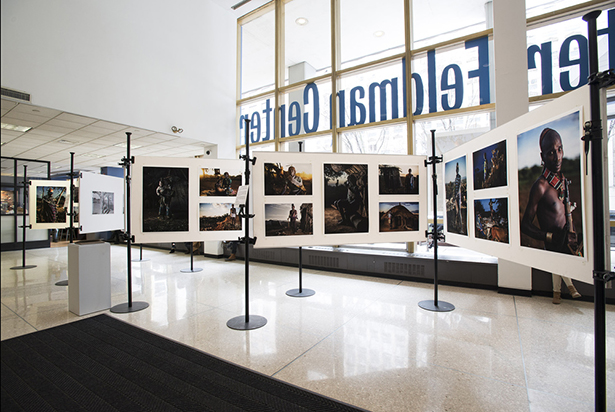NEWSLETTER
|
From LAFF’s Archive: A Tribute to Marvin Feldman
In the Summer 1994 issue, the late Edward Meade, co-founder and first president of LAFF, paid tribute to Marvin Feldman, who had died in November 1993.
I first heard about Marv Feldman in the early 1960s. The late Mike Harris was exploring the possibility of the Foundation expanding its activities in the area of vocational and technical education. Mike had recently been in California where he had run across Marv, then a vice president of the Cogswell Polytechnic Institute.
With a model grant from the Rosenberg Foundation, Marv had created and was directing a program that linked the last two years of high school with technical programs at community colleges. Called the “Richmond Plan”, because the schools were in the Richmond school district, the program included team teaching at the high schools. Teachers of English, science, mathematics and industrial arts collaborated to integrate their courses in ways that related to and reinforced each other.
Subsequently, Mike and I went west and made grants to the institute to enable expansion of the program to other sites, such as San Francisco. There were “Richmond Plan” projects in pre-engineering and food services. Proportionately more students in these programs went to community colleges than did those who graduated from high school. Moreover, the program kept some students in high school who would otherwise have dropped out.
Today, this kind of program is called “tech-prep” and can be found in many communities across the country. More recently, the Clinton administration has recommended a school-to-work program that is very much in line with Marv’s early design. Sadly, in all of this activity, Marvin Feldman is not recognized despite the fact that some of the architects of “tech-prep” knew him and learned from his work.
In 1964, Marv joined the education program staff of the Foundation. In addition to his work in vocational education, e.g., initiating co-operative work-study programs in schools and colleges, we wanted Marv to work with other staff members on school improvement, perhaps integrating vocational education activities into the mainstream of secondary education. Marv teamed, in particular, with Mario Fantini. Together, the “M and M” boys, as they were called, helped to fashion the Foundation’s Comprehensive School Improvement. Later, the two became part of the Foundation-wide effort to deal with issues of poverty in urban areas.
Marv also continued efforts directly in vocational education. Because of him, the Foundation assisted several colleges to install cooperative work-study programs and supported Technology for Children, a program in elementary schools that introduced active learning using practical activities to reinforce academic content.
“Active learning”, “engaged learning”, “participatory learning”—whatever the label—is becoming more the mode in schools than ever before. Marv was a proponent of such learning 30 years ago. He argued that children need to be active if they are to learn. He long advocated that schools need to spend less time in passive teaching and more time having students actively engaged in solving problems using real world examples.
Marv left the Foundation in 1969 for assignments with the Federal government, in education and with the Office of Equal Opportunity. Following that, in 1971 he was elected president of the Fashion Institute of Technology (FIT) in New York City. When he arrived, FIT was a good technical school that awarded the associate’s degree. (It had some well-known graduates—Calvin Klein, for one.) But Marv elevated FIT to new heights.
During his 21-year-tenure, FIT expanded to offer the bachelor’s and master’s degrees. The number of majors and concentrations also grew as Feldman and his board met the new demands of the fashion industry. Enrollments boomed, new buildings were built and FIT became a major institution of its kind nationally.
FIT also went abroad. Feldman opened programs in Italy, Israel and India, to name only some. These programs enabled FIT to be a force in the fashion industry internationally. Clearly, under Marvin Feldman, FIT was transformed.
But what about Marv Feldman as a person? He was one of my closest friends and I cherished his friendship. Marv was a constant optimist. Despite real problems, Marv always saw the positive side. His optimistic spirit never wavered. I once told him that if someone knocked him down he would bounce back up in an instant.
He was dependable. If he said he would do something, you could consider it done. His loyalty never waned. He was always there when you needed him. I am ever grateful that I had the privilege and pleasure of his colleagueship and friendship over 30 years. I miss him very much.
|


